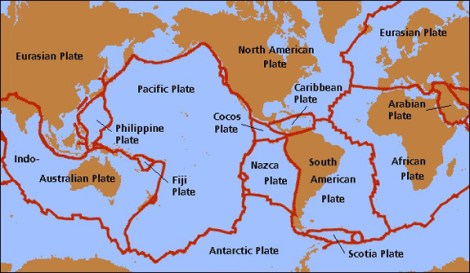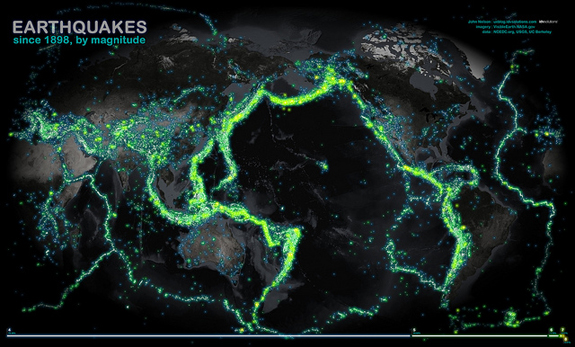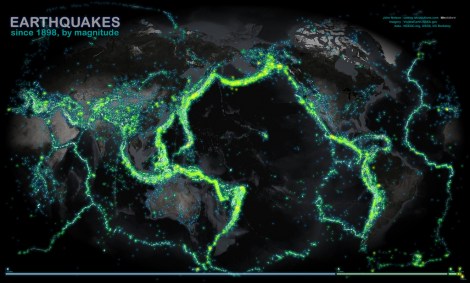This image is the work of data visualizer Josh Nelson, and it represents over 100 years of earthquake data, from 1898 to 2003 — 203,186 quakes that rated 4 or higher on the Richter scale.
As Smithsonian points out, these are mostly along the edges of the tectonic plates:

But there are also scads of intraplate earthquakes, like the one that caused so much devastation in the D.C. area last year. Fracking-related earthquakes would fall in that category, but it’s not clear what else causes them, says Boing Boing:
One of the theories explaining intraplate earthquakes is based off the fact that the tectonic plates we know today have not been constant throughout Earth’s history. Some of the places that are now “intraplate” were once right along fault lines. Others are at spots where continents began—and then failed—to split apart. All these things might leave behind spots of “weak” rock that’s more prone to upheaval than the strong, intraplate rock around it. Studies in the 1990s found that 49% of all intraplate earthquakes happen near places like this. Of course, that leaves 51% of the shaking still unexplained.
There have obviously been lots of these not-satisfactorily-explained intraplate earthquakes over time, so what gives? We’re guessing sandworms.



